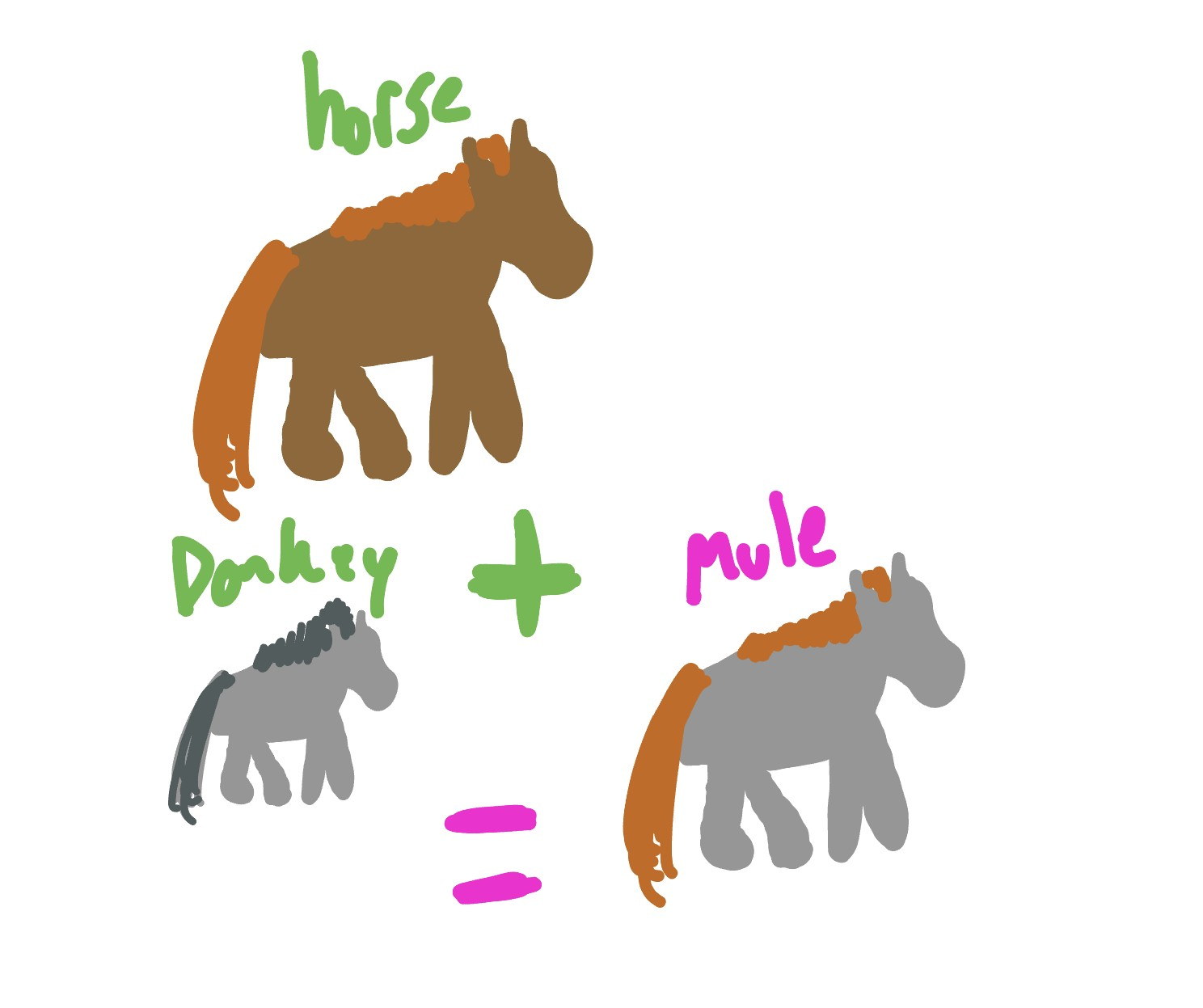Species, speciation... and definitions
What is a Species?
Defining a species may seem simple but it has actually puzzled scientists for centuries. This blog post will cover some of the complexities of defining a species such as the biological, morphological, ecological, and phylogenetic species concepts.
First, biological.
Species if defined biologically by if two different "species' can breed and create fertile offspring. For example horses and donkeys are not the same species because when they mate they make an infertile mule.
Limitation: Cannot account for asexual organisms and ring species,
Advantage: Provided a clear line between species and not.
Second, morphological.
Morphological defines a species based on physical characteristics.
Limitations: Species physical characteristics are not always reflective of the same blood line, for example homologous structures in different species.
Advantages: Can help when looking at extinct organisms and fossils.
Third, ecological.
This defines species based on it's role in the environment.
Limitations: Can show similar ecological niches but still may be not different enough to define them as a different spices in one of the other definitions.
Advantages: Can define similar species with a different ecological niche as different species.
Finally, phylogenic.
This defines species based on their ancestor history.
Limitations: Can split species too often, meaning even if the other definitions considers it a species this variation of the definition would not.
Advantages: More specific than other definitions.
Why a universal definition may be challenging to establish?
A universal definition is hard to establish because life has so many moving parts and is always evolving.



Hello Layla! This post clearly defines species and the concepts perfectly! The information was clear and organized which helped me understand the concepts. Awesome job!
ReplyDelete